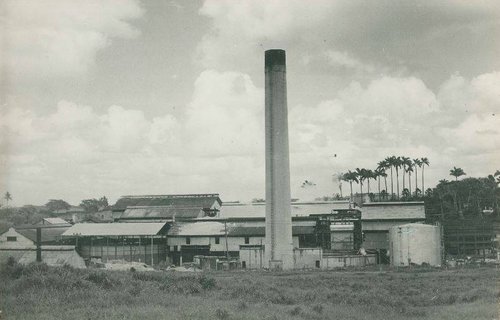Postby TriP » July 10th, 2016, 8:43 pm
Local History ~ Ste Madeleine Sugar Cane Factory
According to James Stark, sugar in Trinidad was "not as in the other colonies, the great staple; nor was it even the first in the field, for cocoa had been cultivated for a century or more before the first sugar-estate was established.
Although sugar-cane was indigenous to this as well as other West Indian islands, three species of which are to be found growing wild in the uncultivated parts of the island, yet the sugar-cane generally cultivated here is, however, an exotic, known as Tahiti cane, and was introduced from Martinique in 1782, by M. St.- H. Begorrat.
The first sugar estate was established by M. Picot de Lapeyrouse in 1787; and from that time up to the date of the capture of the island by the British the cultivation of the sugar-cane increased slowly but steadily."
The photograph below shows the defunct sugar refinery Usine Ste Madeleine.
The word 'usine' is a French word that means a industrial plant that has one or more buildings that maybe interconnected with facilities for manufacturing.
The factory at Ste Madeleine was opened in 1872 - at this time there were other usines operational in Trinidad namely Brechin Castle, Waterloo, Frederick and St. Augustin.
It officially stopped production and closed on 25th May, 2007
-
Attachments
-









